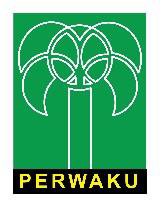Feasibility analysis of lake ex-andesite stone mining as geo-tourism area at Tegalega Village, Cigudeg, Bogor
Abstract
The existence of large wallow which is an ex-mining of andesite stone that is not manage properly became the focus of this study. The objective of this study was to analyse the potential of geo-tourism object at the land of ex-andesite stone mining (Setu Jayamix), as well as to find out the feasibility value of geo-tourism object at the lake of ex-andesite stone mining (Setu Jayamix). Mix methods, which is a combination of qualitative and quantitative methods with the research design of sequential exploratory was used in this study. Sequential exploratory design is a research model where the qualitative data is collected and analyzed, then followed by the collection and analysis of quantitative data, which aims to strengthen the results of the study. The results showed that the potentials of geo-tourism in ex-andesite stone mining area i.e. lake waters, the uniqueness of andesitic stone outcrops, and the view of landscape that overgrown by various plantation crops. Based on the results of the feasibility analyses of geo-tourism, then obtained a feasible value for the geological criteria of physical components (score = 26.334), sustainable for the economic components (score = 20.114), sustainable for the conservation components (score = 10.971), and educative (score = 8.518). Meanwhile, for the accessibility component is declared to be less feasible (score = 61.446).
Keberadaan kubangan besar yang merupakan area bekas penambangan batu andesit yang tidak terkelola secara maksimal menjadi fokus penelitian ini. Penelitian ini bertujuan untuk mengkaji potensi obyek geowisata pada lahan di kawasan bekas tambang batu andesit (Setu Jayamix), serta mengetahui nilai kelayakan obyek geowisata di kawasan danau bekas tambang batu andesit tersebut (Setu Jayamix). Metode kombinasi (mix methods), yaitu gabungan antara metode kualitatif dan kuantitatif dengan model penelitian sequential exploratory design digunakan dalam penelitian ini. Sequential exploratory design merupakan model penelitian dimana data kualitatif dikumpulkan dan dianalisis, kemudian diikuti dengan pengumpulan dan analisis terhadap data kuantitatif, yang tujuannya untuk memperkuat hasil penelitian. Hasil penelitian menunjukan bahwa potensi-potensi geowisata yang terdapat di kawasan lahan bekas tambang batu andesit (Setu Jayamix) adalah perairan setu, keunikan singkapan batu andesit, serta pemandangan lanskap kawasan yang ditumbuhi berbagai tanaman perkebunan. Berdasarkan hasil analisis kelayakan geowisata, maka diperoleh nilai layak untuk kriteria geologis komponen fisik (skor = 26,334), berkelanjutan untuk komponen ekonomi (skor = 20,114), berkelanjutan untuk komponen konservasi (skor = 10,971), serta edukatif (dengan skor = 8,518). Sedangkan untuk komponen aksesibilitas dinyatakan kurang layak (skor = 61,446).
Keywords
References
Arafat, N. and A. Flamin (2012). Analisis kelayakan pengembangan ekowisata di kawasan hutan lindung Kecamatan Anggaberi Kabupaten Konawe Provinsi Sulawesi Tenggara. Jurnal Layanan Kehutanan Masyarakat (1)
: 1-10.
Departemen Kehutanan (2003). Pedoman Analisis Daerah Operasi Objek Daya Tarik Wisata Alam. Dit. WAPJL, DiDitjen. PHKA, Departemen Kehutanan RI, Bogor, Indonesia.
Dowling, R & Newsome, D. (2006). Geotourism, Suistainability, Impacts and Management. Butterworth Heinemann, Oxford, UK.
Hendratno, A. (2002). Perjalanan wisata minat khusus geowisata Gunung Merapi: Studi di lereng Merapi bagian selatan, Yogyakarta. Jurnal Nasional Pariwisata (2)2:7-23.
Kubalikova, L. (2013). Geomorphosite assessment for geo-tourism purposes. Czech Journal of Tourism 1(1):80-103.
Wood, M.E. (2002). Ecotourism: Principles, Practices & Policies for Sustainability. 1st Ed. UNEP/The International Ecotourism Society, Paris, France.
DOI: 10.33751/injast.v1i1.1974
 Abstract views : 658
Abstract views : 658
Refbacks
- There are currently no refbacks.
Copyright (c) 2020 Indonesian Journal of Applied Environmental Studies

This work is licensed under a Creative Commons Attribution-NonCommercial-ShareAlike 4.0 International License.













